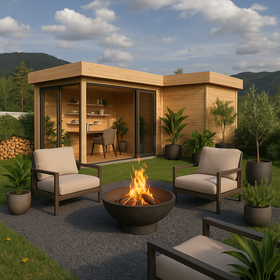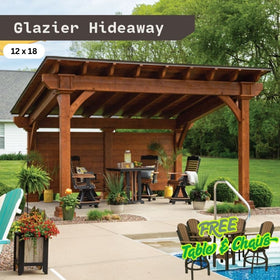512-777-0154

Why Tiny Home? The Reasons for Buying, the History, and the Pros and Cons of Downsizing in America
Tiny homes aren’t just a trend anymore, they’re a full-blown lifestyle shift.
All across America, people are trading big mortgages and endless clutter for smaller spaces and bigger freedom. It’s not just about square footage. It’s about choosing how you want to live.
So, why tiny home? Because it’s affordable, flexible, and surprisingly freeing. Let’s break down what makes these homes so appealing, what challenges come with them, and how this movement started in the first place.
1. The Core Motivation: Why Buy a Tiny Home? (Benefits and Positive Features)
Tiny homes have caught the hearts of dreamers, travelers, and practical folks alike. The reasons are simple: they save money, protect the planet, and make daily life a little easier. Let’s dig into what makes these compact homes so appealing.
Financial Freedom and Affordability
Money is one of the biggest reasons people go tiny. With prices often between $30,000 and $60,000, a tiny home costs a fraction of what most traditional houses do. That means less debt, smaller property taxes, and freedom from a long mortgage.
Many owners buy outright, skipping decades of payments. It’s not about giving up luxury, it’s about trading financial stress for peace of mind. For many, owning a home without the weight of a loan feels priceless.
Lower Environmental Impact and Energy Efficiency
Tiny homes also win big on sustainability. Smaller spaces use fewer materials and take less energy to heat or cool. Monthly utility bills often drop to a third of what you’d pay in a regular home.
Some owners go even further, adding solar panels, rainwater systems, or composting toilets. These off-grid options make tiny living a smart choice for anyone who wants to tread lightly on the planet. It’s eco-friendly living made simple.
Simplified Lifestyle and Minimalism
Living in a tiny home means learning to let go of excess. Every inch matters, and that’s a good thing. When you only keep what you love and need, life feels lighter.
With less to clean and organize, you gain more time for what really counts: hobbies, family, or just relaxing. Minimalism becomes less about rules and more about freedom.
Mobility and Flexibility
One of the biggest perks? Mobility. Many tiny homes are built on wheels, giving owners the chance to move wherever adventure calls.
Whether it’s parking by the ocean, settling in the woods, or staying close to family, Tiny Homes on Wheels (THOWs) make it possible. It’s homeownership with built-in flexibility.
2. The Trade-Offs: Disadvantages of Living in a Tiny House
Every lifestyle has its challenges, and tiny homes are no exception. While they offer freedom and savings, they also require big adjustments. Here’s what to think about before taking the leap.
Severe Constraints on Space and Storage
Let’s be honest, space is tight. Downsizing means parting with a lot of things and staying tidy becomes a daily habit.
Couples or families might find privacy a challenge, and hosting guests can get awkward fast. Clever storage tricks help, but even with creativity, space is still limited. Living small demands discipline and teamwork.
Legal, Financing, and Resale Challenges
Tiny homes live in a legal gray zone. Zoning laws and building codes vary by city and state, making placement tricky. Some areas treat tiny homes like RVs, others as permanent dwellings.
Traditional financing isn’t always available, which can make purchasing more complex. And when it’s time to sell, resale value isn’t guaranteed. These hurdles don’t stop tiny home fans but they do require extra research and patience.
Increased "Tiny" Chores and Lifestyle Adjustments
A smaller space doesn’t mean fewer chores. In fact, tiny living often adds new ones.
Off-grid setups might require you to empty composting toilets, refill water tanks, or monitor energy use. With limited space, clutter can pile up quickly, so daily tidying is a must. It’s a different rhythm of living, one that rewards consistency and simplicity.
3. The Tiny House Movement in America: History and Demographics
Tiny homes didn’t just appear overnight. The movement has roots in economic struggle, creativity, and a desire for freedom.
Let’s take a quick look at how it all began and who’s leading the way today.
Origins and Evolution of the Movement
The modern tiny home trend started in the late 1990s with pioneers like Jay Shafer, founder of the Tumbleweed Tiny House Company. Around the same time, The Not So Big House by Sarah Susanka challenged the idea that bigger homes meant better living.
Then came the Great Recession (2007–2009), which pushed many to seek affordable, debt-free housing. Tiny homes offered a practical and empowering solution and the movement took off.
The American Motivation: Escaping the Traditional Dream
For decades, the American Dream meant owning a large home. But rising costs, student debt, and burnout began to shift that dream.
Tiny homes became a way to live differently: owning property without the burden, and focusing on experiences over possessions. Some communities now use tiny homes to address student housing needs, workforce shortages, and even homelessness.
It’s a sign of a cultural shift: people want freedom more than square footage.
Demographics of Tiny Home Owners
Who’s going tiny? A mix of generations.
Millennials and young professionals are drawn to flexibility and adventure. Retirees and empty nesters see tiny homes as a chance to simplify and travel.
Research shows that women make up a slightly larger share of tiny homeowners, and many have higher education levels. The appeal cuts across income levels but unites people who value control, independence, and a simpler life.
A Shift Towards Intentional Living
At its heart, the tiny home movement is about living with purpose. It’s not just a smaller house, it’s a bigger idea.
Choosing a tiny home means trading excess for experience, debt for freedom, and clutter for calm. It’s a reminder that happiness doesn’t come from square footage but from how fully you live in the space you have.
The tiny house movement isn’t a passing phase. It’s a thoughtful response to modern life showing that sometimes, the smallest spaces can lead to the biggest sense of freedom.







